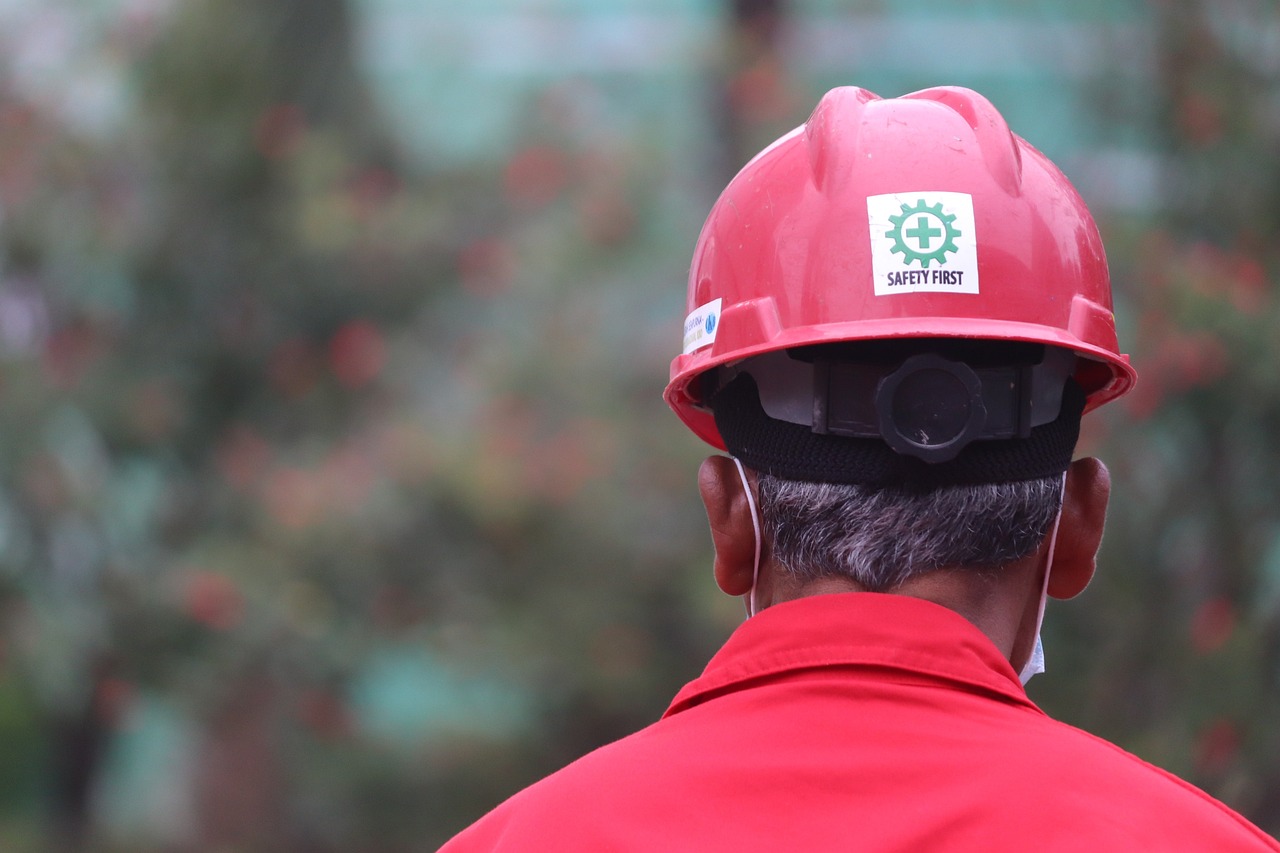Understanding Human Behavior – A Safety Necessity
In today's fast-paced world, understanding human behavior is not just an academic exercise; it’s a critical necessity for ensuring safety in various environments. Whether in the workplace, at home, or in public spaces, the way individuals perceive and respond to risks can significantly influence the effectiveness of safety protocols. Think about it: have you ever noticed how people react differently in emergencies? Some freeze, while others leap into action. This variation in response can be attributed to a myriad of factors, including psychological influences, emotional states, and even social dynamics.
When we delve into the psychology of risk assessment, we uncover a complex interplay of cognitive biases and emotional responses that shape our decisions. For instance, individuals may underestimate risks due to a cognitive bias known as the optimism bias, which leads them to believe that negative events are less likely to happen to them compared to others. This skewed perception can result in unsafe behaviors, such as neglecting to wear safety gear or ignoring warning signs. On the flip side, excessive fear or anxiety can paralyze decision-making, causing individuals to overreact or make hasty choices that may exacerbate a situation.
Moreover, the role of training in modifying behavior cannot be overstated. Effective training programs are designed not merely to impart knowledge but to instill a culture of safety that resonates on a personal level. For instance, when employees engage in hands-on training that simulates real-life scenarios, they are more likely to internalize safety protocols. This engagement fosters a deeper understanding of the importance of safety measures, ultimately leading to a more proactive approach to risk management.
One particularly effective approach is the implementation of Behavioral Safety Programs. These programs focus on observing and modifying employee behaviors to enhance workplace safety. By analyzing behaviors in real-time and providing immediate feedback, organizations can create a culture that prioritizes safety. Case studies have shown that companies that actively engage in behavioral safety initiatives see a marked reduction in accidents and injuries. For example, a manufacturing plant that adopted such a program reported a 40% decrease in workplace incidents within the first year.
Another critical aspect is the use of positive reinforcement techniques. By acknowledging and rewarding safe behaviors, organizations can foster an environment where safety becomes a shared value. This can include simple gestures like recognition in team meetings or more formal incentives. The impact of these strategies can be profound, leading to a significant shift in how individuals approach safety protocols.
Leadership plays a pivotal role in shaping a robust safety culture. Leaders who model safe practices and set clear expectations can profoundly influence their teams. Open communication about safety concerns fosters an environment where employees feel empowered to voice their thoughts and take ownership of their safety practices. When leaders prioritize safety, it becomes a collective responsibility, creating a ripple effect throughout the organization.
Equally important is the influence of peer dynamics on safety behavior. Humans are inherently social creatures, and our behaviors are often shaped by those around us. In environments where safety is a shared value, individuals are more likely to adhere to protocols. Conversely, if safety norms are lax, individuals may feel pressured to conform to unsafe practices. Understanding these social dynamics can help organizations develop strategies that leverage peer influence to promote safer behaviors.
As we explore the emotional factors that drive safety-related decisions, it becomes evident that feelings such as fear, anxiety, and even overconfidence can skew our judgment in critical moments. For example, in high-stress environments, individuals may overlook potential hazards due to a heightened focus on immediate tasks. This underscores the need for effective stress management strategies as part of safety planning.
Finally, the role of technology in understanding human behavior cannot be ignored. With advancements in data analytics, wearable devices, and simulation technologies, we now have unprecedented insights into behavior patterns. These tools can help identify at-risk behaviors and predict potential safety breaches before they occur, ultimately leading to improved safety outcomes across various sectors.
- Why is understanding human behavior important for safety?
Understanding human behavior helps tailor safety protocols to be more effective, as it considers how people actually respond to risks. - How can training improve safety behavior?
Training can instill a culture of safety by engaging individuals in real-life scenarios, making them more likely to adhere to protocols. - What role does leadership play in safety culture?
Leaders can set expectations, model safe practices, and foster open communication, significantly influencing organizational safety norms. - How do emotional factors affect safety decisions?
Emotions like fear and anxiety can cloud judgment, leading to either overreactions or negligence in the face of potential hazards.

The Psychology of Risk Assessment
Understanding how we assess risk is not just a matter of statistics or facts; it’s deeply rooted in our psychological makeup. When faced with a potential hazard, our brains go through a complex process of evaluation that is influenced by various cognitive biases and emotional factors. Imagine you're standing on the edge of a cliff, looking down at the rocky waves below. Your brain is racing, weighing the thrill of jumping against the potential dangers. This internal dialogue is a classic example of risk assessment in action.
Cognitive biases play a significant role in how we perceive danger. For instance, the availability heuristic leads us to overestimate the likelihood of events based on how easily we can recall similar instances. If we frequently hear about plane crashes in the news, we might irrationally fear flying, despite it being statistically safer than driving. Similarly, the optimism bias can make us believe that we are less likely to experience negative outcomes compared to others. This bias can lead to risky behaviors, as individuals may underestimate their vulnerability to accidents.
Emotions also heavily influence our risk assessment. Fear, for example, can trigger a fight-or-flight response, leading to either heightened caution or reckless decisions. When we feel anxious, our ability to think clearly diminishes, often causing us to either overreact or downplay the seriousness of a situation. Conversely, feelings of overconfidence can lead us to take unnecessary risks, believing we can handle any situation that arises. In high-stakes environments, such as construction sites or medical facilities, these emotional responses can have dire consequences.
To illustrate these concepts, consider the following table that outlines common cognitive biases and their effects on risk assessment:
| Cognitive Bias | Description | Impact on Risk Assessment |
|---|---|---|
| Availability Heuristic | Overestimating the probability of events based on recent memory | Increased fear of flying due to media coverage of crashes |
| Optimism Bias | Believing oneself to be less at risk than others | Underestimating the danger of reckless driving |
| Anchoring | Relying too heavily on the first piece of information encountered | Misjudging the safety of a new product based on its initial reviews |
By understanding these psychological factors, we can develop more effective safety protocols that take human behavior into account. For instance, training programs can be designed to help individuals recognize their biases and learn to make more informed decisions in risky situations. When people understand that their emotional responses can cloud their judgment, they become better equipped to navigate potential hazards.
In conclusion, the psychology of risk assessment is a fascinating interplay between our cognitive processes and emotional states. By recognizing how these elements influence our decision-making, we can create safer environments and improve overall safety outcomes. After all, understanding human behavior is not just a necessity; it’s a vital tool in our quest for safety.
- What is risk assessment? Risk assessment is the process of identifying and analyzing potential hazards to determine their impact and likelihood.
- How do cognitive biases affect decision-making? Cognitive biases can distort our perception of risks and lead to poor decision-making, often causing us to underestimate or overestimate dangers.
- Why is emotional awareness important in safety protocols? Being aware of our emotions can help us make more rational decisions, especially in high-stress situations where our judgment might be compromised.

The Role of Training in Behavior Modification
When it comes to enhancing safety in any environment, training plays a pivotal role in modifying human behavior. Think of training as the compass that directs individuals toward safer practices. It’s not just about following rules; it’s about instilling a mindset that prioritizes safety at every turn. Imagine you’re in a high-stakes situation—whether it’s a construction site, a healthcare facility, or even your own home. The decisions you make in those moments can mean the difference between safety and disaster. This is where effective training becomes essential.
Training programs tailored to specific environments can significantly influence how individuals perceive and react to risks. For instance, in a workplace setting, employees who undergo regular safety training are more likely to recognize hazards and respond appropriately. This isn’t just a matter of knowledge; it’s about transforming that knowledge into action. To illustrate this, consider the following key components that effective training programs should incorporate:
- Realistic Scenarios: Training that includes simulations or role-playing can prepare individuals for real-life situations. This hands-on approach helps reinforce safe behaviors.
- Continuous Learning: Safety training shouldn’t be a one-time event. Regular refreshers help keep safety protocols fresh in everyone’s mind.
- Feedback Mechanisms: Providing feedback during training sessions encourages individuals to learn from their mistakes and reinforces positive behaviors.
One effective method of behavior modification is through Behavioral Safety Programs. These programs focus on observing and modifying employee behaviors through a systematic approach. By identifying unsafe behaviors and providing immediate feedback, organizations can create a culture where safety is the norm. For example, a construction company that implements such a program might see a significant decline in accidents simply by encouraging workers to report unsafe conditions and rewarding them for doing so.
In addition to behavioral safety programs, the use of positive reinforcement techniques can also drive significant change. When individuals are rewarded for adhering to safety protocols, they are more likely to repeat those behaviors. This could be as simple as verbal praise or as elaborate as a points system leading to tangible rewards. The idea is to create an environment where safety is celebrated rather than merely enforced.
Leadership plays a crucial role in this process. Leaders who model safe behaviors and openly communicate about safety concerns set a powerful example for their teams. When employees see their leaders prioritizing safety, they are more likely to follow suit. Establishing a safety culture starts at the top, and it requires leaders to be proactive in their approach.
Moreover, the influence of peer dynamics cannot be overlooked. Individuals are often swayed by the behaviors of those around them. If a colleague consistently adheres to safety protocols, others are likely to follow their lead. This peer influence can be harnessed through team-based training exercises that foster camaraderie and shared responsibility for safety.
In summary, the role of training in behavior modification is not just about imparting knowledge; it’s about creating a culture of safety that permeates every level of an organization. By investing in comprehensive training programs, utilizing positive reinforcement, and fostering strong leadership, organizations can significantly enhance their safety outcomes. The goal is to create an environment where safety becomes second nature, and everyone feels empowered to contribute to a safer workplace.
Q: How often should safety training be conducted?
A: Safety training should be conducted regularly, ideally at least once a year, with additional refreshers as needed based on changes in the workplace or procedures.
Q: What are some signs that a training program is effective?
A: Signs of an effective training program include a noticeable reduction in accidents, increased employee engagement in safety discussions, and positive feedback from participants.
Q: Can technology enhance safety training?
A: Absolutely! Technology such as virtual reality simulations and online training modules can make safety training more engaging and effective.

Behavioral Safety Programs
Behavioral safety programs are an essential component in enhancing workplace safety by focusing on the behaviors of employees. These programs are designed to observe, analyze, and modify behaviors that may lead to accidents or unsafe conditions. Imagine a workplace where every employee is not only aware of safety protocols but actively engaged in promoting a culture of safety. This is the vision behind behavioral safety programs. They aim to create an environment where safety becomes second nature, rather than an afterthought.
At the core of these programs is the understanding that human behavior is often influenced by various factors, including environment, peer pressure, and even personal attitudes towards safety. By implementing behavioral safety programs, organizations can identify risky behaviors and provide targeted interventions to promote safer practices. For example, regular safety audits and observations can help pinpoint specific behaviors that need modification. This proactive approach allows organizations to address potential hazards before they lead to accidents.
One successful strategy in behavioral safety programs is the use of real-time feedback. When employees receive immediate feedback on their safety practices, they are more likely to adjust their behaviors accordingly. This could involve a simple acknowledgment of safe practices or constructive criticism when unsafe behaviors are observed. For instance, if a worker is seen wearing the proper protective equipment, a supervisor might offer praise, reinforcing that behavior. Conversely, if an employee neglects to follow safety protocols, immediate intervention can help them understand the risks involved.
Moreover, the effectiveness of behavioral safety programs can be amplified through the incorporation of case studies. Organizations that have successfully implemented these programs often share their results, creating a ripple effect of safety awareness across industries. For example, a manufacturing company that reduced its accident rate by 40% after introducing a behavioral safety program can inspire others to follow suit. These success stories not only motivate employees but also demonstrate the tangible benefits of prioritizing safety in the workplace.
In addition to feedback and case studies, engaging employees in the development and implementation of safety programs can foster a sense of ownership and accountability. When employees feel they have a stake in safety initiatives, they are more likely to embrace and adhere to safety protocols. This participatory approach can include workshops, safety committees, and brainstorming sessions where employees can voice their concerns and suggestions. By valuing employee input, organizations can create a more robust safety culture.
To summarize, behavioral safety programs are not just about rules and regulations; they are about understanding and influencing human behavior. By focusing on positive reinforcement, real-time feedback, and employee engagement, organizations can cultivate a safer work environment that benefits everyone. The journey to a safer workplace is ongoing, but with the right strategies in place, it can lead to significant reductions in accidents and injuries.
- What are behavioral safety programs?
Behavioral safety programs focus on observing and modifying employee behaviors to enhance workplace safety. - How do these programs work?
They work by identifying risky behaviors, providing feedback, and engaging employees in safety initiatives to promote safer practices. - What are some benefits of implementing behavioral safety programs?
Benefits include reduced accident rates, improved employee engagement, and a stronger safety culture within the organization. - Can you give an example of a successful behavioral safety program?
Many companies have reported significant reductions in accidents after implementing these programs, often sharing their success stories to inspire others.

Positive Reinforcement Techniques
When it comes to promoting safer behaviors in various settings, the power of positive reinforcement cannot be overstated. Imagine a workplace where every time an employee follows safety protocols, they receive recognition or a small reward. This simple act can create a ripple effect, encouraging not just the individual, but also their peers to adopt similar practices. Positive reinforcement taps into our natural desire for approval and rewards, making it an effective strategy for behavior modification.
So, how does this work in practice? Well, it’s all about creating an environment that celebrates safety. For instance, consider a manufacturing facility that implements a monthly safety award for the team with the best safety record. Not only does this motivate the winning team, but it also inspires others to step up their game. It's like a friendly competition where the prize is a safer workplace, and who wouldn’t want that?
Furthermore, positive reinforcement can take many forms. Here are a few examples:
- Verbal Praise: Simple words of encouragement can go a long way. A manager acknowledging an employee for wearing their safety gear can reinforce that behavior.
- Incentives: Offering tangible rewards, such as gift cards or extra breaks, can motivate employees to prioritize safety.
- Public Recognition: Highlighting individuals or teams in company meetings or newsletters can boost morale and encourage others to follow suit.
Research shows that when individuals feel appreciated for their safe behaviors, they are more likely to continue those behaviors over time. This leads to a culture of safety where everyone is invested in maintaining a secure environment. It’s like planting a seed that grows into a robust tree of safety, with strong roots in positive reinforcement.
Moreover, the effectiveness of these techniques can be measured through various metrics. For instance, organizations can track the number of safety incidents before and after implementing positive reinforcement strategies. A
| Time Period | Number of Safety Incidents | Positive Reinforcement Techniques Implemented |
|---|---|---|
| Before Program | 15 | None |
| After 3 Months | 8 | Verbal Praise, Incentives |
| After 6 Months | 3 | Public Recognition, Incentives |
This table clearly demonstrates how positive reinforcement can lead to a significant reduction in safety incidents over time. It’s not just about the numbers; it’s about fostering an environment where employees feel valued and are motivated to prioritize safety.
In conclusion, implementing positive reinforcement techniques is a powerful way to enhance safety behaviors in any environment. By recognizing and rewarding safe practices, organizations can cultivate a culture of safety that benefits everyone. It’s about creating a community where safety is not just a protocol, but a shared value. After all, when people feel good about their actions, they're more likely to repeat them. So, let’s embrace positivity and watch as safety flourishes!

Role of Leadership in Safety Culture
When it comes to establishing a robust safety culture within any organization, leadership is the cornerstone. Leaders set the tone, create expectations, and shape the behaviors of their teams. Imagine a ship navigating through stormy seas; the captain's decisions and actions directly influence the crew's response to the challenges ahead. Just like that captain, leaders in the workplace must navigate the complexities of safety protocols and employee behaviors.
Effective leaders understand that safety isn’t just a set of rules; it’s a culture that needs to be cultivated. They actively participate in safety initiatives, demonstrating their commitment through actions rather than mere words. This leads to a ripple effect, where employees feel valued and are more likely to engage in safe practices. For instance, when a manager takes the time to join safety training sessions or acknowledges safe behaviors in team meetings, it sends a powerful message: safety is a priority.
Moreover, leaders have the unique ability to foster open communication about safety concerns. By creating an environment where employees feel comfortable voicing their worries—be it about equipment malfunctions or unsafe practices—leaders can address potential hazards before they escalate. This open dialogue not only enhances trust but also empowers employees to take ownership of their safety and that of their colleagues.
To illustrate the impact of leadership on safety culture, consider the following table, which outlines key leadership behaviors that contribute to a positive safety environment:
| Leadership Behavior | Impact on Safety Culture |
|---|---|
| Modeling Safe Practices | Sets a standard for employees to follow, reinforcing the importance of safety. |
| Encouraging Feedback | Promotes a culture of continuous improvement and responsiveness to safety issues. |
| Recognizing Safe Behaviors | Motivates employees to prioritize safety and reinforces positive actions. |
| Providing Resources | Ensures that employees have the tools and knowledge necessary to work safely. |
Additionally, leaders can implement regular safety meetings to discuss incidents, share lessons learned, and celebrate safety successes. These gatherings not only keep safety at the forefront of everyone’s minds but also strengthen team cohesion. After all, safety is a collective responsibility, and when everyone is on board, the organization as a whole benefits.
In conclusion, the role of leadership in shaping a safety culture cannot be overstated. By actively engaging in safety practices, fostering open communication, and modeling the behaviors they wish to see, leaders create an environment where safety thrives. This proactive approach not only protects employees but also enhances overall organizational performance, proving that a strong safety culture is indeed a shared journey led by committed leaders.
- What is the importance of leadership in safety culture? Leadership is crucial as it sets the tone for safety practices, encourages open communication, and models safe behaviors.
- How can leaders promote safety among employees? Leaders can promote safety by actively participating in safety training, recognizing safe behaviors, and providing necessary resources.
- What role does communication play in a safety culture? Open communication allows employees to voice safety concerns, leading to timely interventions and a stronger safety culture.

Peer Influence on Safety Behavior
Have you ever noticed how your friends' actions can sometimes sway your own decisions? This phenomenon is particularly evident in the realm of safety behavior, where the influence of peers can either bolster or undermine safety protocols. The dynamics of social interactions play a pivotal role in shaping individual behaviors, especially in environments where safety is paramount. When individuals are surrounded by peers who prioritize safety, they are more likely to adopt similar behaviors. Conversely, if they are in an environment where safety is disregarded, the likelihood of risky behavior increases significantly.
One of the key aspects of peer influence is the concept of social norms. People often look to their peers to gauge what is acceptable or expected behavior. For instance, in a workplace setting, if the majority of employees consistently follow safety protocols, new hires or less experienced workers are likely to mimic these behaviors. This creates a positive feedback loop where safety becomes a shared value among the team. On the flip side, if employees observe their colleagues cutting corners or neglecting safety measures, they may feel pressured to conform to that behavior, leading to a culture of risk-taking.
To illustrate this point, consider a study conducted in a manufacturing facility. The researchers found that when safety champions—employees who actively promote safety—were present, incidents of unsafe behavior dropped by over 30%. This highlights how peer influence can be harnessed to create a safer work environment. By cultivating a culture where safety is championed by individuals, organizations can significantly reduce the likelihood of accidents and injuries.
Moreover, the role of peer influence extends beyond just direct interactions. Social media and online communities can also impact safety behavior. For instance, when individuals share their experiences regarding safety practices on platforms like Facebook or LinkedIn, they can inspire others to adopt similar practices. This kind of digital peer influence can be particularly powerful, as it transcends geographical boundaries and can reach a wider audience.
In summary, the influence of peers on safety behavior is a double-edged sword. It can either promote a culture of safety or lead individuals down a path of risk. Organizations need to be aware of this dynamic and actively work to foster an environment where positive peer influence thrives. This can be achieved through initiatives that encourage teamwork, open communication about safety concerns, and recognition of safe practices. By doing so, they can ensure that safety becomes a collective responsibility, ultimately leading to better outcomes for everyone involved.
- How can organizations encourage positive peer influence in safety behavior?
Organizations can encourage positive peer influence by implementing safety recognition programs, promoting teamwork, and providing platforms for open discussions about safety practices.
- What role does leadership play in shaping peer influence on safety behavior?
Leadership sets the tone for safety culture. Leaders who model safe practices and engage with employees about safety concerns can create an environment where positive peer influence flourishes.
- Can social media impact safety behavior?
Yes, social media can significantly impact safety behavior by allowing individuals to share experiences and best practices, which can inspire others to adopt safer behaviors.

Emotional Factors in Safety Decision-Making
When it comes to making safety decisions, emotions often play a more significant role than we might like to admit. Have you ever found yourself hesitating to take a precautionary measure because you felt invincible, or perhaps you've overreacted to a minor threat due to fear? These emotional responses can shape our actions in critical situations, often leading to outcomes that could be vastly different if we approached them with a more rational mindset. Understanding the intricate dance between emotion and decision-making is essential for creating effective safety protocols.
One of the most profound emotional influences on safety decisions is fear. Fear can be a double-edged sword; on one hand, it can prompt us to take necessary precautions, while on the other, it can lead to paralysis or overreaction. For instance, in high-stress environments like construction sites, workers may feel an overwhelming fear of accidents, which could either lead them to be overly cautious, potentially slowing down productivity, or cause them to ignore safety measures altogether, thinking, "It won't happen to me." This psychological tug-of-war highlights the need for a balanced approach to safety training that acknowledges these emotional factors.
Another significant emotional factor is anxiety. In environments where the stakes are high, such as in healthcare or emergency response, anxiety can cloud judgment and lead to errors. Individuals may become so focused on potential threats that they fail to recognize immediate hazards. For example, a firefighter might be so preoccupied with the fear of a building collapsing that they neglect to wear their helmet. This illustrates the critical need for strategies that help individuals manage anxiety, allowing them to maintain clarity and focus during high-pressure situations.
Moreover, overconfidence can also skew our safety decisions. It's easy to fall into the trap of believing that our experience or skills make us invulnerable to accidents. This can lead to risky behaviors, such as skipping safety checks or ignoring protocols. A classic example of this is the seasoned driver who feels confident enough to text while driving, convinced that they can handle it. This false sense of security can have devastating consequences, emphasizing the importance of continuous education and reminders about the risks associated with complacency.
To illustrate the impact of these emotional factors, consider the following table that outlines common emotions and their potential effects on safety decisions:
| Emotion | Potential Effect on Decision-Making |
|---|---|
| Fear | Can lead to over-cautiousness or negligence |
| Anxiety | May cloud judgment and increase errors |
| Overconfidence | Can result in risky behaviors and disregard for safety protocols |
Incorporating emotional intelligence into safety training can significantly enhance decision-making processes. By fostering an understanding of how emotions influence behavior, organizations can better prepare their teams to respond to risks effectively. This might involve training sessions that include role-playing scenarios, where individuals can practice managing their emotional responses in simulated high-stress environments.
Furthermore, creating a culture that encourages open discussions about emotions related to safety can also lead to better outcomes. When team members feel safe to express their concerns or fears, it opens up pathways for collective problem-solving and reinforces the importance of adhering to safety protocols. After all, safety is not just about rules and regulations; it's about the people who follow them and how they feel in the face of potential danger.
In conclusion, acknowledging and addressing emotional factors in safety decision-making is not merely an option—it's a necessity. By understanding how emotions like fear, anxiety, and overconfidence can shape our actions, we can develop more effective safety strategies that not only protect individuals but also foster a culture of safety within organizations.
- What role do emotions play in safety decision-making? Emotions can significantly influence how individuals assess risk and respond to potential hazards, often leading to either overreactions or negligence.
- How can organizations manage emotional responses related to safety? Organizations can implement training programs that focus on emotional intelligence and create a culture that encourages open discussions about safety concerns.
- What are some common emotional pitfalls in safety practices? Common pitfalls include fear, anxiety, and overconfidence, all of which can lead to poor decision-making and increased risks.

Stress and Its Impact on Safety
When we talk about safety, we often think about protocols, equipment, and training. However, what about the invisible force that can cloud our judgment and lead us to make poor decisions? Yes, I’m talking about stress. In high-pressure environments, stress can act like a double-edged sword—while it can motivate us to perform, it can also impair our decision-making abilities and increase the risk of accidents.
Imagine you’re working in a bustling factory, surrounded by heavy machinery and tight deadlines. The pressure to meet production targets can be overwhelming. Under such circumstances, stress levels can skyrocket, leading to a state where your mind is racing, and your focus is scattered. This is where the danger lies. Studies have shown that high levels of stress can significantly impair cognitive functions, such as attention, memory, and problem-solving skills. When faced with potential hazards, a stressed individual may overlook critical safety measures or misinterpret risk signals.
To illustrate this point, let’s consider a few key factors that highlight the relationship between stress and safety:
- Decision-Making Under Pressure: When we are stressed, our brains often resort to quick fixes instead of carefully weighing options. This can lead to hasty decisions that compromise safety.
- Physical Reactions: Stress triggers the body’s fight-or-flight response, which can lead to increased heart rates and heightened alertness. While this might sound beneficial, it can also result in anxiety and impaired coordination.
- Long-Term Effects: Chronic stress can lead to burnout, which diminishes overall performance and increases the likelihood of accidents. An exhausted worker is less likely to adhere to safety protocols.
So, how do we tackle this issue? One effective approach is to implement stress management strategies within safety training programs. By teaching individuals how to recognize their stress levels and cope with them, we can create a safer environment. Techniques such as mindfulness, deep-breathing exercises, and regular breaks can significantly reduce stress and enhance focus.
Moreover, fostering a supportive workplace culture where employees feel comfortable discussing their stressors can make a world of difference. Open communication allows teams to address potential safety issues before they escalate, ensuring that everyone is on the same page when it comes to safety protocols.
In conclusion, understanding the impact of stress on safety is crucial for creating effective safety measures. By acknowledging this invisible threat and taking proactive steps to manage it, we can significantly reduce the likelihood of accidents and enhance overall safety in various environments.
- How can stress affect decision-making in safety-critical situations?
Stress can impair cognitive functions, leading to hasty decisions and overlooked safety measures. - What are some effective stress management techniques?
Mindfulness, deep-breathing exercises, and regular breaks can help reduce stress levels. - Why is workplace culture important for safety?
A supportive workplace culture encourages open communication about stressors, allowing teams to address safety concerns proactively.

Technology's Role in Understanding Behavior
In today's fast-paced world, technology has become an essential tool for understanding human behavior, especially in the context of safety. The advent of data analytics, wearable devices, and simulations has revolutionized how we assess and respond to safety-related issues. Imagine being able to predict potential hazards before they occur—this is now a reality thanks to technological advancements. By harnessing the power of technology, organizations can gain profound insights into behavioral patterns, enabling them to implement more effective safety measures.
Data analytics plays a critical role in this process. By collecting and analyzing vast amounts of data from various sources, organizations can identify trends and patterns in behavior that may not be immediately apparent. For instance, if a company notices a spike in accidents during a specific time of day, they can investigate further to understand the underlying causes. This could be due to factors such as employee fatigue, environmental conditions, or inadequate supervision. By pinpointing these issues, organizations can take proactive steps to mitigate risks and enhance safety protocols.
Wearable devices, such as smart helmets and safety vests equipped with sensors, are another game-changer in the realm of safety. These devices can monitor an individual's physical condition and environmental factors in real-time. For example, a smart helmet can alert workers if they are in a hazardous area or if their heart rate indicates they are overexerting themselves. This immediate feedback empowers individuals to make safer choices on the spot, reducing the likelihood of accidents.
Simulations also play a vital role in understanding human behavior in safety contexts. Virtual reality (VR) and augmented reality (AR) technologies allow individuals to experience potential hazards in a controlled environment. Imagine a construction worker donning a VR headset to navigate a simulated construction site filled with realistic dangers. This immersive experience helps workers recognize risks and practice safe behaviors without the real-world consequences. By engaging in such simulations, individuals can build muscle memory and develop a heightened awareness of their surroundings, ultimately leading to safer work practices.
Moreover, technology facilitates better communication and collaboration among team members regarding safety. With the help of mobile applications and platforms, workers can easily report safety concerns or near-miss incidents. This fosters a culture of openness where everyone feels responsible for maintaining safety standards. When employees are encouraged to share their observations, organizations can gather valuable insights that inform their safety strategies.
As we delve deeper into the intersection of technology and human behavior, it's essential to recognize the potential challenges as well. While technology can enhance safety, it can also lead to over-reliance. Workers might become complacent, assuming that technology will always keep them safe. Therefore, it's crucial to strike a balance between leveraging technology and promoting personal accountability in safety practices.
In conclusion, technology plays a transformative role in understanding and improving human behavior in safety contexts. By embracing data analytics, wearable devices, and simulations, organizations can create a safer work environment and empower individuals to make informed decisions. As we continue to innovate and evolve, the synergy between technology and human behavior will undoubtedly pave the way for a safer future.
- How can data analytics improve safety measures?
Data analytics helps organizations identify patterns and trends in behavior, allowing them to address potential risks proactively. - What are some examples of wearable devices used in safety?
Smart helmets and safety vests with sensors are examples of wearable devices that monitor conditions and alert workers to hazards. - How do simulations enhance safety training?
Simulations provide immersive experiences that help individuals recognize risks and practice safe behaviors in a controlled environment. - Can technology replace human judgment in safety?
While technology can enhance safety, it should not replace personal accountability. A balance must be maintained between technology and human judgment.
Frequently Asked Questions
- What is the importance of understanding human behavior in safety protocols?
Understanding human behavior is crucial because it directly impacts how safety measures are perceived and followed. When we grasp the psychology behind decision-making and risk assessment, we can tailor safety protocols that resonate more effectively with individuals, leading to better compliance and fewer accidents.
- How do cognitive biases affect risk assessment?
Cognitive biases can skew our perception of danger, making us either overestimate or underestimate risks. For example, the optimism bias might lead someone to believe that accidents won't happen to them, while the availability heuristic could cause them to react more strongly to recently reported incidents. Recognizing these biases helps in designing better safety training and communication strategies.
- What role does training play in modifying behavior related to safety?
Training is essential for changing behaviors because it provides individuals with the knowledge and skills necessary to recognize hazards and respond appropriately. Effective training programs employ various methodologies, such as hands-on simulations and engaging workshops, to instill a culture of safety and encourage proactive behaviors.
- Can you explain what behavioral safety programs are?
Behavioral safety programs focus on observing and modifying employee behaviors to improve workplace safety. By identifying unsafe practices and implementing strategies to encourage safer behaviors, organizations can significantly reduce accident rates. These programs often include peer observations, feedback sessions, and recognition of safe practices.
- How does positive reinforcement impact safety behaviors?
Positive reinforcement motivates individuals to adhere to safety protocols by rewarding safe behaviors. This could be in the form of verbal praise, recognition programs, or tangible rewards. When people see that their safe actions are acknowledged, they are more likely to repeat those behaviors in the future.
- What is the significance of leadership in fostering a safety culture?
Leadership is pivotal in establishing a safety culture because leaders set the tone for organizational values and behaviors. By modeling safe practices, communicating openly about safety concerns, and holding everyone accountable, leaders can create an environment where safety is prioritized and ingrained in daily operations.
- How does peer influence affect safety behaviors?
Peer dynamics play a significant role in shaping individual safety behaviors. If a group prioritizes safety and adheres to protocols, it's likely that individuals within that group will follow suit. Conversely, if unsafe practices are normalized, it can lead to a culture where safety is overlooked. Understanding these dynamics can help in developing strategies that leverage positive peer influence.
- What emotional factors can impact safety decision-making?
Emotions like fear, anxiety, and overconfidence can heavily influence how individuals respond to potential hazards. For instance, fear can lead to paralysis in decision-making, while overconfidence might cause someone to underestimate risks. Recognizing these emotional triggers is vital for creating effective safety training and interventions.
- How does stress affect safety in high-pressure environments?
High-stress environments can impair decision-making and increase the likelihood of accidents. Stress can cloud judgment and lead to rushed or poor choices. Implementing stress management strategies, such as mindfulness training or regular breaks, can significantly enhance safety outcomes by ensuring individuals remain focused and alert.
- What role does technology play in understanding human behavior related to safety?
Advancements in technology, such as data analytics and wearable devices, provide valuable insights into human behavior. These tools can track patterns, identify risk areas, and enhance training methods. By leveraging technology, organizations can improve their understanding of behavior patterns and develop more effective safety measures.



















